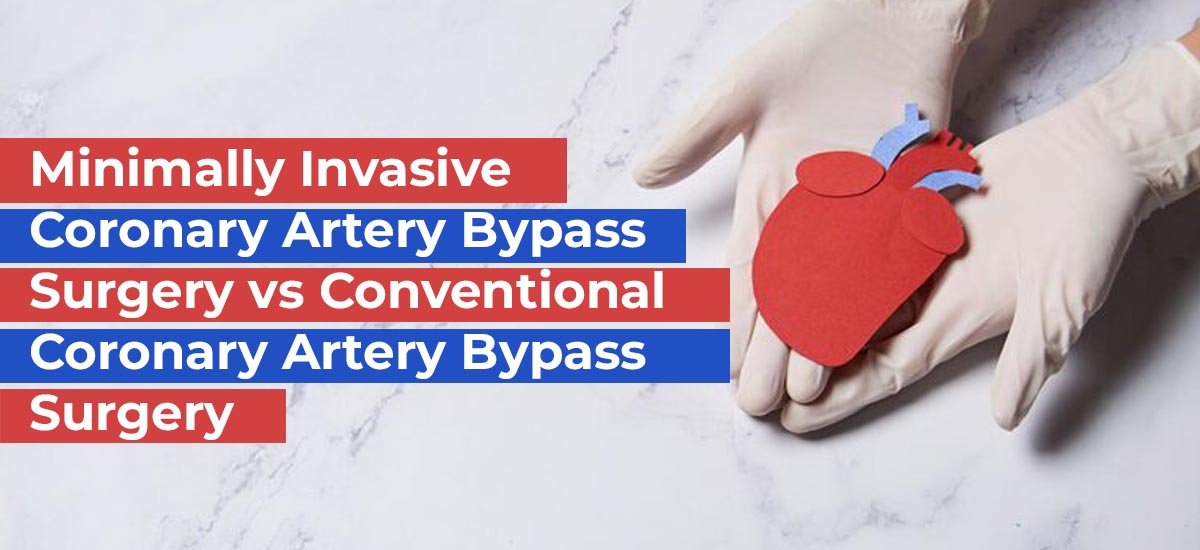Minimally Invasive Coronary Artery Bypass Surgery vs Conventional Coronary Artery Bypass Surgery
Home - Bog - Minimally Invasive Coronary Artery Bypass Surgery vs Conventional Coronary Artery Bypass Surgery

Minimally Invasive Coronary Artery Bypass Surgery vs Conventional Coronary Artery Bypass Surgery
When coronary arteries are severely blocked, Coronary Artery Bypass Grafting (CABG) is one of the most effective ways to restore blood supply to the heart. Two main types of surgery are available: Conventional CABG (open-heart surgery) and Minimally Invasive CABG (MICS). Each method has its own advantages and limitations, and the right choice depends on a patient’s condition.
Conventional CABG
Conventional CABG is the traditional and most widely performed type of bypass surgery.
- ✅ The chest is opened through a midline incision (sternotomy).
- ✅ Surgeons use arteries or veins to create new routes (grafts) that bypass blocked arteries and supply blood to the heart muscle.
In most cases, the surgery is performed on a beating heart (off-pump CABG), and the heart-lung machine is rarely needed. This reduces complications and supports smooth recovery.
Benefits
- ✅ Proven long-term results backed by decades of experience worldwide.
- ✅ Best option for patients with complex or multiple blockages.
- ✅ Allows surgeons to perform several grafts in one operation.
Limitations
- ✅ Requires a larger incision, leaving a more noticeable scar.
- ✅ Recovery and hospital stay are slightly longer compared to minimally invasive techniques.
Minimally Invasive CABG (MICS)
Minimally Invasive CABG is performed through a much smaller incision, usually on the side of the chest, without cutting the breastbone. Specialized instruments are used, and the surgery is done on a beating heart.
Benefits
- ✅ Smaller incision with less visible scarring.
- ✅ Faster recovery and shorter hospital stay for suitable patients.
- ✅ Less blood loss and postoperative pain.
Limitations
- ✅ Not suitable for everyone, especially those with multiple blockages or complex heart disease.
- ✅ Technically more demanding for surgeons, with limited access to the heart.
- ✅ Long-term results are still being studied, while conventional CABG has stronger evidence.
- ✅ In many centers, the cost is around 20% higher due to the use of additional disposable instruments and specialized equipment.
Which Approach is Right for You?
There is no universal “best” option. The choice depends on several factors, including:
- ✅ The number and location of blockages.
- ✅ The patient’s overall health and medical history.
- ✅ The surgeon’s expertise and experience with each method.
In general:
- ✅ Conventional CABG remains the standard treatment and is most effective for patients with multiple or complex blockages.
- ✅ Minimally Invasive CABG may be considered for carefully selected patients who are eligible and wish for smaller scars and quicker recovery.
Conclusion
Both Conventional CABG and Minimally Invasive CABG are effective treatments for heart disease. Conventional CABG is backed by long-term proven success and is widely suitable, while minimally invasive CABG offers cosmetic and recovery benefits for selected patients, though usually at a higher cost.
The most important step is to discuss your individual case with an experienced cardiac surgeon, who can recommend the safest and most effective approach tailored to your needs.
